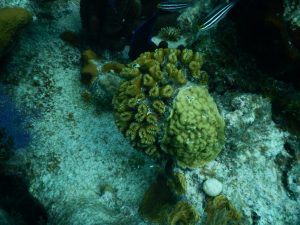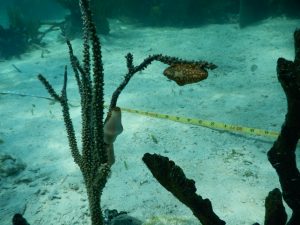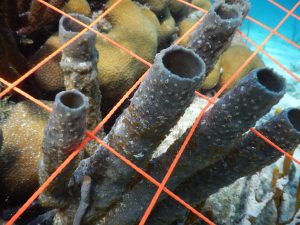I woke up at around 6 to finish up blogs before eating breakfast with the rest of the gang at 7, where we had the sweetest pineapple I’ve ever had. We got a chance to use our quadrat for the first time by doing a little mock experiment by counting the leaf litter on the Beck Interpretive Trail. We changed and jumped in the water to try the same methodology using worm mounds in the sea grass bed, where I may or may not have lost my clipboard which Elena promptly found.
We had a little break after this so we headed to the observation tower to see the island and walked around the trails before a delicious lunch. We took a stop to the dead coral graveyard and got to see some great examples of the corals we would be seeing in real life just a little later. We changed back into our gear before heading our on the boat for out first dive outside Middle Caye.
We sailed about 15 minutes into the MPA (marine protected area) zone where we decided to use our quadrats to measure the percentage of the benthos in MPA vs non-MPA areas that were covered in live coral. We used the transect and quadrat to measure our small plots of reef over 100ft. We finished pretty fast so we got to explore the reef and look at sea urchins that scattered the rocks everywhere. I might have then lost our quadrat but Sam and Rose found it so our team slogan of Will Rice Will Lose Stuff seems apt.
We went a little farther out into the non-MPA zone to repeat the procedure. This area was a little deeper so we had to dive to retrieve our equipment. Elena and I finished pretty quickly again so we spent some time looking around, where we got to see a spotted moray eel.
We headed back to the main island where I quickly took a shower before dinner. We got to drink from some fresh coconuts here, which came at the exact right time. We had dinner and had some down time where we worked on our notebooks and blogs and enjoyed the wind and lightning from the coming storm. We headed inside for lectures from Chloe (soft coral), Andressa (green algae) and Ceyda( the future of coral reefs). Everyone was falling asleep hard during this so we all stood up a little and Elena, uninvited, slapped me with a Clif Bar. After lectures ended, we stayed in the classroom and finished up our blogs and notebooks for the day.
CZA found: giant Caribbean anemone in the MPA zone in a very shallow region (about 2 ft), surrounded by soft coral and growing on rock.
Sun anemone in non MPA zone- it was a little hard to be sure that I saw this one because it was far away but it was in a rock cropping surrounded by hard coral in a shady edge of a reef.
Both of these were expected, though I did expect to see more of both types in the reefs


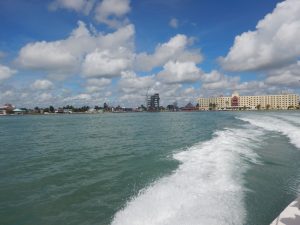
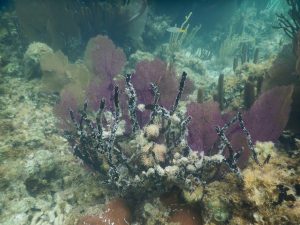

 No spiders or corallimorphs, zoanthids, or anemones seen today
No spiders or corallimorphs, zoanthids, or anemones seen today
